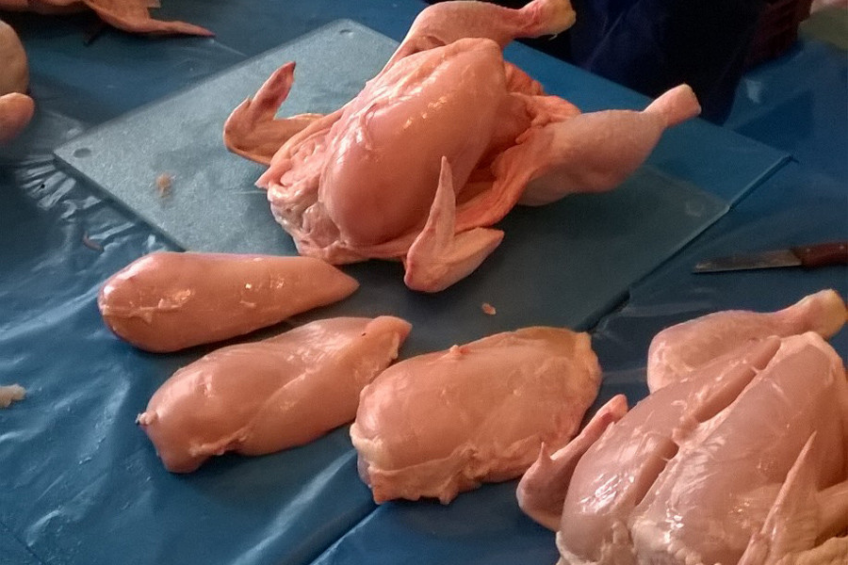US team identify wooden breast biomarkers

University of Delaware researchers have analysed the genes involved in wooden breast disease and have identified biomarkers for the disorder. Such findings are expected to help advance new diagnostics and treatments for the disorder.
Wooden breast syndrome affects broiler chickens, making the meat hard and chewy, rendering the birds unmarketable. The research led by Behnam Abasht, assistant professor in the Department of Animal and Food Sciences, determined the unique biochemistry of the hardened breast tissue.
Manifestation of disease
“The disease manifests itself exactly as the name implies, making a chicken’s breast extremely tough and with the feel of wood,” Abasht said. The disease also may cause issues such as white striping, in which white lines are visible parallel to the muscle fibres — a condition that may decrease the nutritional content.
With improvements in poultry production over the past 50 years leading to increased muscle yield and growth rate in chickens, Abasht said he wanted to see if these production gains could also be increasing the rate and development of new muscle disorders.
Also interesting:
Will genetics solve the wooden breast problem?
Pinpointing genes
One of the first ways Abasht and his team looked at the problem was by studying all of the genes expressed in chicken breast tissue to get an understanding of the underlying biological mechanisms contributing to the disease.
By constructing complementary DNA information from 5 affected and 6 unaffected breast muscle samples from a line of commercial broiler chickens, the team compared their gene list to previously published histology findings on the disorder.
“From over 11,000 genes with a detectable expression in the tissue, we found that around 1,500 genes are significantly different between these 2 groups, the healthy and the affected,” said Abasht. “Once we had the list, we did a functional analysis to find out where those genes belong — do they belong to specific pathways or specific cellular functions? We were trying to make sense of the genes and what they tell us.
Localised hypoxia
“What we found is that there may be localised hypoxia — a lower oxygen concentration in the affected tissues. In addition, our findings strongly suggest presence of oxidative stress — when free radicals build up and there aren’t enough antioxidants to detoxify them — as well as an increase in calcium in the tissue cells.”
“By using advanced technology such as RNA sequencing we were able to characterise the general profile of this disease, which was a key first step in the research process,” said Marie Mutryn, who graduated in 2015 and did her master’s thesis on the disease. “I was very lucky to be able to study such a novel disease at UD as a master’s student, and I really felt like I was able to make an impact to help the poultry industry combat this disease.”
Identifying biomarkers
Building on the gene expression data, the team started to identify biomarkers likely to be associated with wooden breast incidence and severity. Using a subset of the genes found in the previous study, the team quantified the expression levels of 204 genes in 96 broiler chickens.
From a list of 30 genes that were the most important in separating the chickens into groups of unaffected, moderately affected and severely affected, the team identified 6 genes that are increased in moderately to severely affected birds when compared with unaffected birds. These biomarkers can now be used to accurately classify commercial chickens with or without the disease, as well as to potentially indicate its severity.
Aiding 500 million broiler chickens
“This work will directly impact the health and well-being of over 500 million broiler chickens raised in the Delmarva region each year,” said Erin Brannick, director of the CANR Comparative Pathology Laboratory, assistant professor in the Department of Animal and Food Sciences, and a veterinary pathologist who was a collaborator on the research.
Going forward, the US Department of Agriculture recently funded a $500,000 research grant proposal, which is a collaboration between UD, Iowa State University and Ohio State University, that aims to further characterise the genetic basis of wooden breast. Abasht will serve as the principal investigator on the project.
[Source: University of Delaware]













